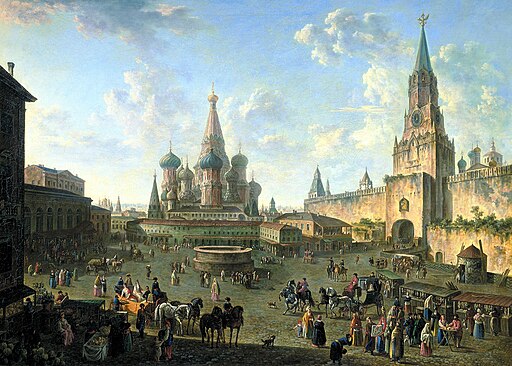
The Portrait of Juan by Diego Velázquez is a portrait of Velázquez’s enslaved assistant Juan de Pareja, who was owned by Velázquez at the time the painting was completed.
Velázquez painted this portrait in Rome, while he was traveling in Italy. It is the earliest known portrait of a Spanish man of African descent.
During Velázquez’s stay in Rome, he displayed this painting as part of a more extensive exhibition of paintings at the Pantheon in 1650. His contemporaries applauded the art as standing out as a model of realism.
Diego Velázquez
Diego Velázquez, as the court painter to King Philip IV of Spain, was sent to Rome to purchase works of art for the King. Velázquez brought with him Juan de Pareja, who served as an assistant and who was of Moorish descent.
De Pareja (1606 – 1670 ) was born into slavery in Spain, but he became an artist in his own right, and he was freed in 1650, close to the time of this painting. His 1661 work, The Calling of Saint Matthew, is on display at the Museo del Prado.
Diego Velázquez was the leading artist in the Spanish court of King Philip IV, and one of the most important painters of the Spanish Golden Age.
He was a unique artist of the contemporary Baroque period. In the early nineteenth century, Velázquez’s artwork became a model for the realist and impressionist painters.
More recently, modern artists, including Pablo Picasso, Salvador Dalí, and Francis Bacon, have paid tribute to Velázquez by recreating several of his most famous works.
Juan de Pareja
Juan de Pareja (1606 – 1670) was a Spanish painter, born into slavery in Antequera. He was a member of the household and workshop of painter Diego Velázquez, who freed him in 1650.
Pareja was inherited by Velázquez and became an assistant in his painting after 1631. Juan de Pareja was born into slavery, the son of an enslaved African-descended woman and a white Spanish father.
Events during the time of Velázquez
- 1605 – Don Quixote de la Mancha, the first modern novel, was written.
- 1611 – King James Version of the Bible published in England.
- 1618 – Thirty Years’ War – Protestants revolt against Catholic rule.
- 1619 – The first African slaves are brought to Jamestown.
- 1631 – The Taj Mahal is built in India.
- 1642 – English Civil War.
- 1660 – English Parliament calls for the restoration of the monarchy
- 1664 – The English seize New Amsterdam from the Dutch. The city is renamed New York.
Portrait of Juan de Pareja
- Title: Portrait of Juan de Pareja
- Artist: Diego Velázquez
- Date: 1650
- Medium: Oil on canvas
- Dimensions: 81.3 × 69.9 cm (2.6 × 2.2 ft)
- Museum: Metropolitan Museum of Art – MET
Diego Velázquez
- Name: Diego Rodríguez de Silva y Velázquez
- Born: 1599 – Seville, Spain
- Died: 1660 (aged 61) – Madrid, Spain
- Nationality: Spanish
- Movement: Baroque
- Notable works:
- The Triumph of Bacchus
- Las Meninas
- Portrait of Juan de Pareja
- Venus at her Mirror
- Christ in the House of Martha and Mary
- The Surrender of Breda
“Portrait of Juan de Pareja” by Diego Velázquez
“Portrait of Juan de Pareja” by Diego Velázquez
Explore the Metropolitan Museum of ArtMET European Paintings Collection
- “Pygmalion and Galatea” by Jean-Léon
- “Saint Jerome as Scholar” by El Greco
- “Portrait of Juan de Pareja” by Diego Velázquez
- “Camille Monet on a Garden Bench” by Claude Monet
- “View of Toledo” by El Greco
- “The Musicians” by Caravaggio
- “The Death of Socrates” by Jacques-Louis David
- “The Harvesters” by Pieter Bruegel the Elder
- “Young Woman Drawing” by Marie-Denise Villers
- “The Grand Canal, Venice” by J. M. W. Turner
- “The Houses of Parliament (Effect of Fog)” by Claude Monet
- “Madame Cézanne in a Red Dress” by Paul Cézanne
MET Modern and Contemporary Art Collection
- “Reclining Nude” by Amedeo Modigliani
- “Improvisation 27 (Garden of Love II)” by Wassily Kandinsky
- “Jeanne Hébuterne” by Amedeo Modigliani
- “The Card Players” by Paul Cézanne
- “Bathers” by Paul Cézanne
MET American Wing Collection
- “Washington Crossing the Delaware” by Emanuel Leutze
- “Portrait of Madame X” by John Singer Sargent
- “Mother and Child” by Mary Cassatt
- “Fur Traders Descending the Missouri” by George Caleb Bingham
- “The Gulf Stream” by Winslow Homer
“Portrait of Juan de Pareja” by Diego Velázquez
Juan de Pareja
~~~
“I’ll never get tired of hearing your sweet words, but I will get tired of not.”
– Diego Velázquez
~~~
Photo Credits: 1) Diego Velázquez [Public domain], via Wikimedia Commons
Popular this Week








 Sponsor your Favorite Page
Sponsor your Favorite Page SEARCH Search for: Search Follow UsJoin – The JOM Membership Program
Sponsor a Masterpiece with YOUR NAME CHOICE for $5
Share this:
- Tweet
